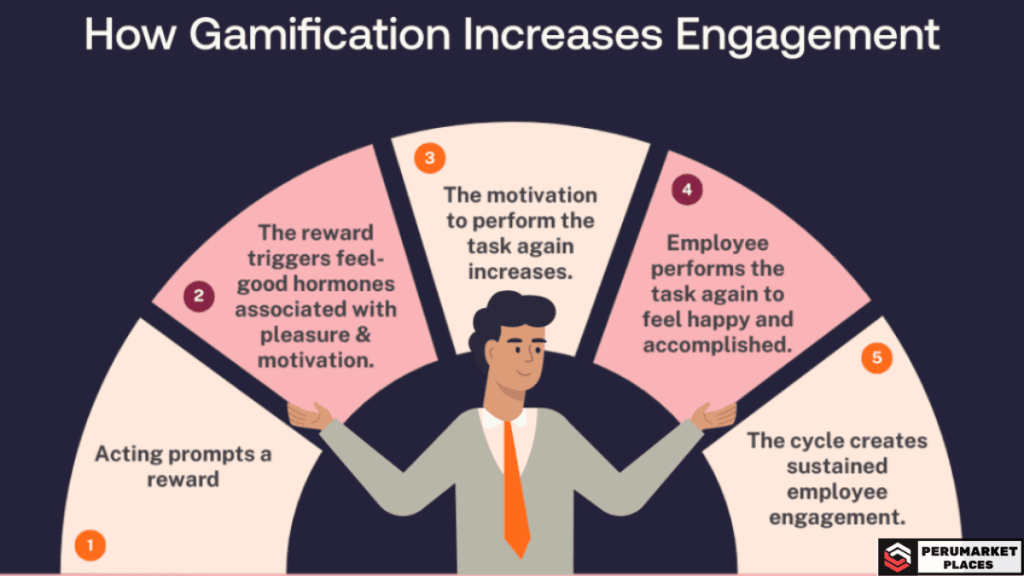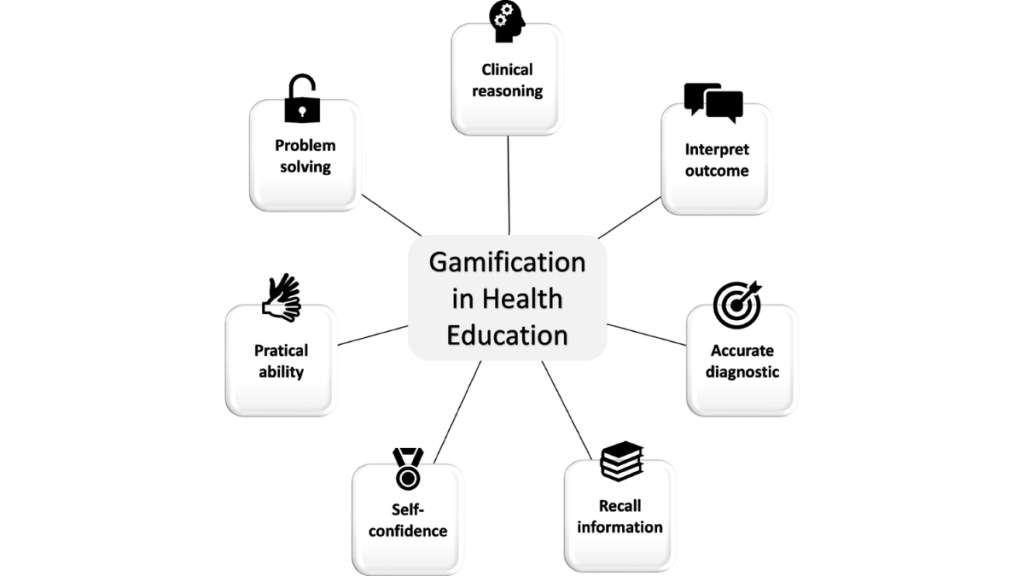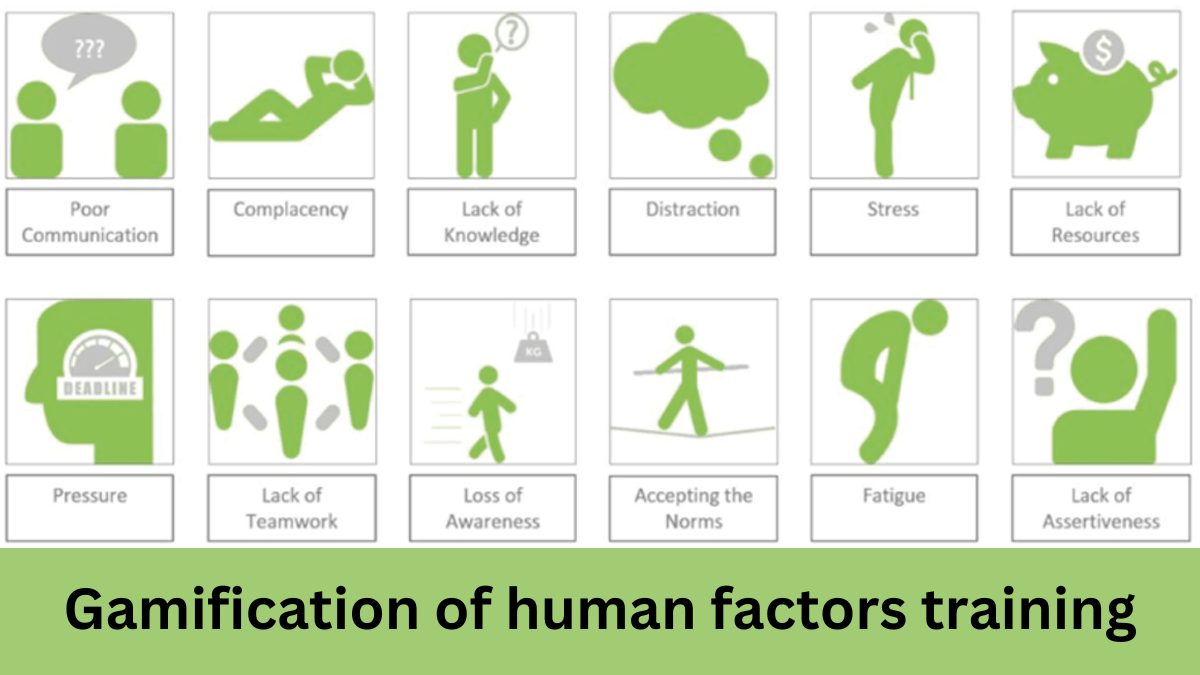Table of Contents
In fields like healthcare, aviation, and energy, human factors such as poor communication, complacency, and lack of resources often lead to accidents and incidents, underscoring the need for effective solutions. While traditional gamification of human factors training is essential, it may not fully engage employees or drive long-term behavioral change. This is where gamification comes in: a strategy that incorporates game elements into training to boost engagement, motivation, and skill development.
By incentivizing the completion of training modules and making learning more interactive, gamification transforms traditional training methods into more engaging, effective experiences. This article Gamification of Human Factors Training will explore how gamification is reshaping human factors training in high-risk sectors, examining its benefits, challenges, and applications to improve safety and performance.
What is gamification of human factors training?

Gamification refers to the use of game-like elements in non-gaming contexts, such as training programs, to enhance participation. In human factors training, gamification simulates real-world scenarios. Gamification of Human Factors Training helps employees develop skills to avoid mistakes that could cause accidents.
Gamification of human factors training aims to make employees engage with their learning. Gamification, unlike passive lectures or manuals, engages learners with the content. They must make decisions and solve problems in a controlled environment.
Click here to read more: What Does Shark Eat for Food.
The Benefits of Gamification of Human Factors Training
Gamification of human factors training has key benefits for organizations and employees, leading to tangible improvements. Let’s explore how gamified training can improve safety and performance in the workplace.
1. Increased engagement and motivation
Traditional training methods, while important, can often fail to capture employees’ attention. Gamification, however, makes the learning process more dynamic and engaging. A rewards system, achievement Earning a badge can serve as a tangible reward for participation in the training program.s, and leaderboards motivate employees. Gamification of Human Factors Training track employees’ progress. Competing in a friendly setting boosts motivation and encourages more people to join in.
Also, gamified training lets employees play a game. It challenges them to make decisions and solve problems in real time. This keeps employees engaged and ensures that they are learning in a more impactful way.

2. Improved skill development and knowledge retention
One of the primary goals of human factors training is to equip employees with the skills to prevent errors and make informed decisions. Gamified training encourages learners to interact and compete with each other. helps learners develop both technical and non-technical skills. In high-risk fields like healthcare and aviation, employees must grasp human factors. These include communication, stress management, and decision-making.
A quiz-based education and training program can boost skills and knowledge. In interactive training modules, employees can practice scenarios that simulate real-world situations. This hands-on approach ensures employees learn and retain the theory in practice.
3. Real-World Application in a Safe Environment
Gamification of human factors training helps employees face real-world scenarios safely. They can learn without the risk of making mistakes. For example, in healthcare, employees can simulate medical procedures and decision-making using technology. This is hard to replicate in training. These scenarios help learners tackle real-life issues without fear of harm.
4. Immediate Feedback and Rewards
Gamification also introduces immediate feedback into the training process. Employees receive rewards such as points, badges, and virtual trophies based on their performance. This quick feedback loop motivates learners to interact with a game and improve. It helps them progress through the training and achieve their goals faster.
Gamification of Human Factors Training The reward system also makes training fun and reinforces positive behavior. When employees succeed in completing a task or solving a problem, they are rewarded, which further boosts motivation and fosters a competitive spirit. This game design This approach encourages continuous improvement and reinforces participation. good habits.
Read this article to get more info: Food Chain Reading and Questions PDF
Case Study: Gamification in Healthcare Training
A healthcare case study shows that gaming techniques can improve human factors training through increased participation. They promote active learning. The Northern Health & Social Care Trust used a gamified project management strategy to embed tangible improvements in training. The gamified training program aimed to improve patient safety by addressing common human errors. The program used a mobile app. It let healthcare workers take part in simulations. These simulations replicated real-world challenges, like poor communication and a lack of tangible resources.
The app incorporated Dupont’s Dirty Dozen, a set of 12 common human factor errors that impact healthcare practice. The learners did missions. They had to decide to avoid errors. They earned points for correct choices. After the missions, they received feedback. It helped them reflect on their performance and improve their skills through gamified completion tasks.

How to Implement Gamification in Human Factors Training
Implementing gamification of human factors training requires careful planning and the right strategy. Here’s how to get started:
1. Define clear learning objectives.
The first step in implementing gamified training is to define clear learning objectives. What do you want employees to achieve in their gamified training schedule? Setting clear goals will help design the training program for workforce completion. They will improve communication, reduce stress, and enhance decision-making skills.
2. Design engaging and relevant scenarios.
The next step is to design training scenarios that are both engaging and relevant to the workplace. For instance, you can create simulations where employees have to solve a problem under pressure or work together to achieve a common goal. The scenarios must reflect real-world challenges. They should allow users to practice their skills and knowledge.
3. Incorporate game mechanics.
Adding game elements like points, levels, and quizzes can make training more fun and interactive. Leaderboards in the training will make it more engaging for gamers. Use a competitive approach to engage learners. badge system to reward progress and achievement. Competition among employees can boost teamwork. They work together to compete on the leaderboard.
4. Provide Continuous Feedback
Make sure that the gamified training provides continuous feedback. Employees should receive feedback at each step of the way, whether they succeed or fail. This feedback helps them understand their mistakes and make improvements.
5. Track Progress and Adapt
As employees participate in the training, track their progress and adapt the training content to embed best practices and meet their needs. We can create personalized learning paths for each employee. They will be based on their performance. This will challenge them without overwhelming them.
Challenges of Gamifying Human Factors Training
Gamification in training has clear benefits. It can also improve project management. Gamification has clear benefits, but there are some challenges in its implementation:
Scalability:
A major challenge for large organizations is finding new ways to improve training. One idea is to use gamification to make learning more engaging and competitive. It’s tough to create a training program that can be adapted and applied across teams, especially if the content is specialized.
Cost and Resource Allocation:
High-quality gamified training needs a big upfront investment in tech, game design, and content. However, the long-term benefits often outweigh the initial costs.
Adapting to different learning styles is crucial in education, especially with gamification concepts:
Not all employees respond to the same training methods. It’s important to design a gamified training program. It should cater to different learning styles. Employees may prefer visual, auditory, or kinesthetic learning concepts.
Read this: gamification of human factors training
The gamification of human factors training is transforming how industries address human error. By adding game-like elements, organizations can create engaging training. Gamification of Human Factors Training It will motivate employees to participate and retain new skills, boosting productivity. With the right strategy, gamification can help employees. It can improve their communication, decision-making, and problem-solving skills. Gamification of Human Factors Training will reduce accidents and improve safety in high-risk environments. The future of human factors training is exciting, and gamification will continue to play a key role in shaping the way we learn and work.

